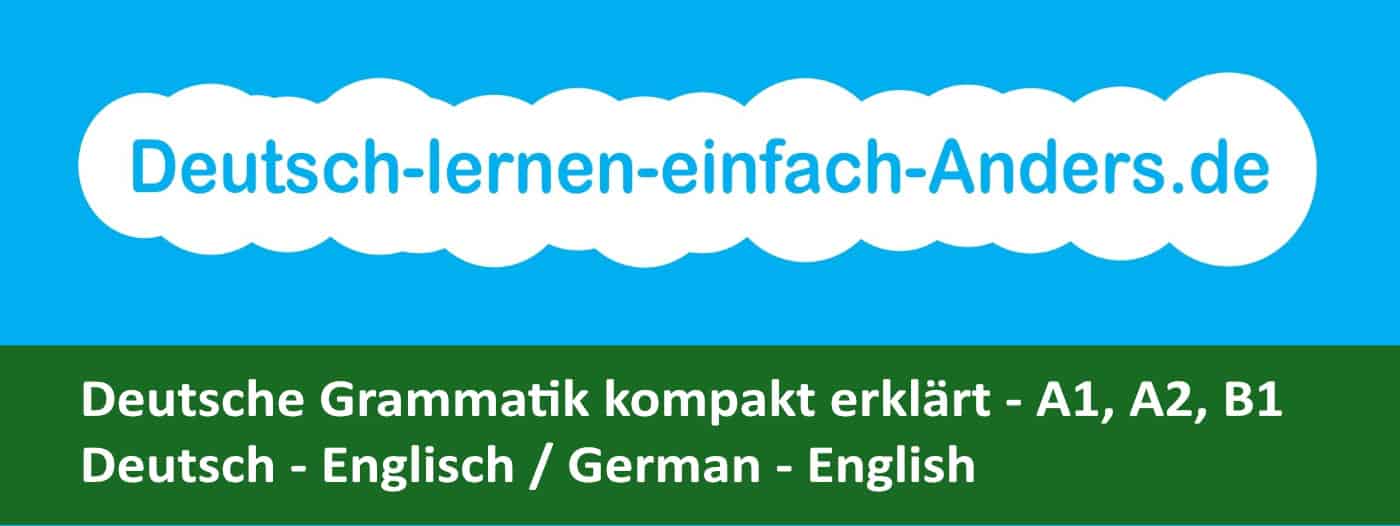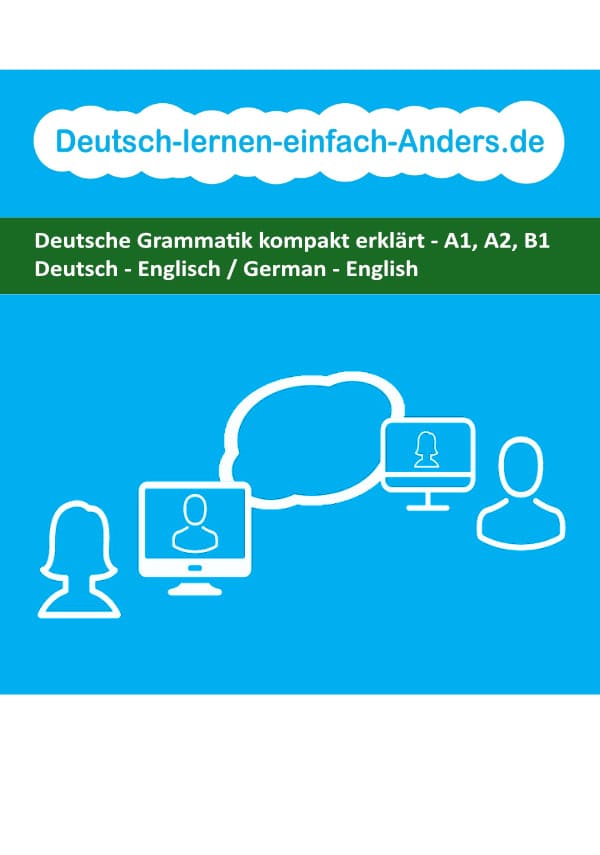


This book was written as a reference guide and learning aid specifically for learners of German at levels A1, A2, and B1. Author Andrea Anders has drawn from her many years of practical experience teaching German and uses this book successfully in her own classes.
A special advantage for learners is the book’s bilingual layout. The side-by-side presentation of grammar rules and corresponding examples in both German and English allows for direct comparison and intuitive understanding of language structures. This not only improves comprehension, but also speeds up the learning process by eliminating the need for separate translations.
This book offers a solid foundation for learning German by covering all essential grammar topics from the A1 to B1 levels. Whether you’re a complete beginner or already have some basic knowledge, the book guides you step by step through the most important rules and concepts to strengthen your understanding of the language and improve your communication skills.
Theory is important, but practice is key. That’s why this book includes plenty of real-life examples and exercises for every grammar topic. With this interactive approach, you can immediately apply what you’ve learned, deepen your understanding, and actively improve your language skills. The exercises are designed to encourage you to speak and write in German with confidence.

Structure & Content:
Strengths:
Target Audience:
Then this book might just be what you’re looking for…
The book is divided into two main sections that mirror each other exactly. For clarity, each part comes with its own table of contents. At the bottom of every page, you’ll see whether you’re in the German or English section.
See for yourself:
Inhaltsverzeichnis
Table of Contents
Learning grammar sustainably and with true understanding means having a structure that makes intuitive sense.
And yes – visual clarity matters!
Your eyes learn too!
1. Solid foundation:
2. Practical learning:
3. Motivating learning experience:
1. Deepening and expanding language skills:
2. Preparing for demanding situations:
3. Independence and mastery:

Andrea Anders is a qualified teacher of German as a Second Language (GSL), as well as a state-certified foreign language correspondent, and has lived and worked abroad in English- and Spanish-speaking countries for several years.